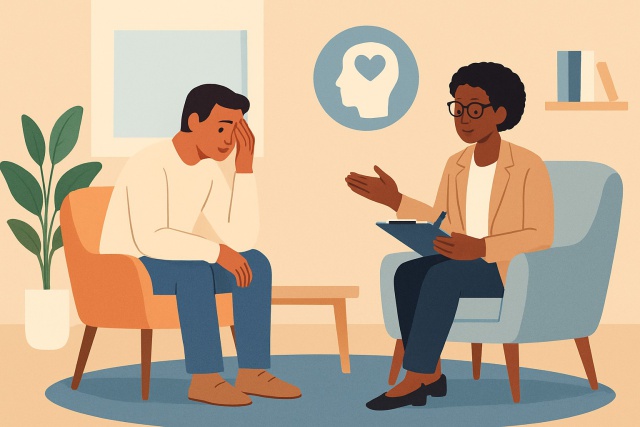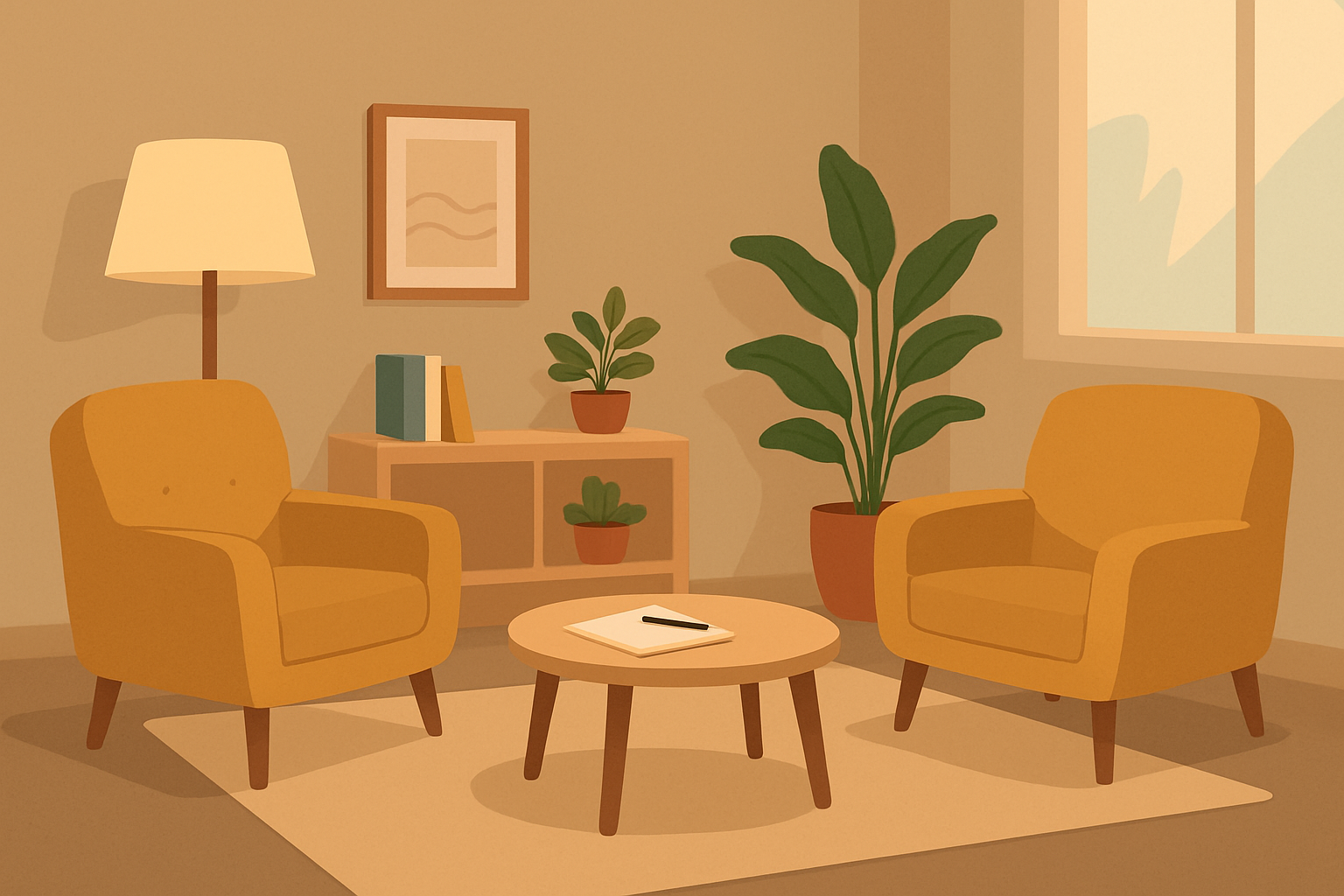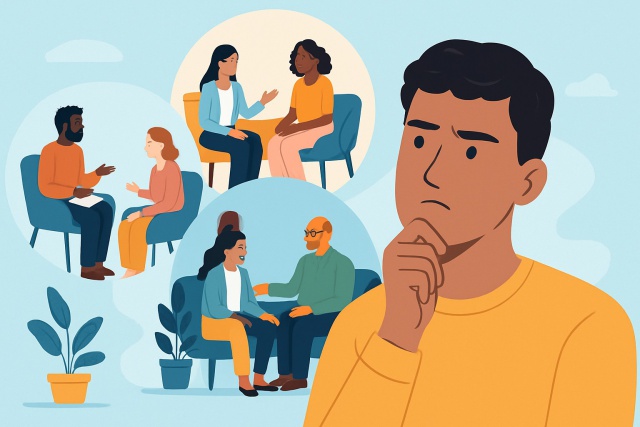Anxious avoidant attachment really shapes the way people connect and build trust in relationships, and seeking therapy for anxious avoidant attachment can help address the emotional distance it often creates.
Getting to Know Anxious Avoidant Attachment A Closer Look That Might Just Surprise You
Anxious avoidant attachment often takes root in early relationships where emotional needs showed up like a surprise party—sometimes there, sometimes nowhere to be found—or were met with a hint of rejection. Individuals with this attachment style frequently feel caught in a tug of war between craving closeness and dodging intimacy.
- Emotional detachment often acts like a protective shield warding off the sting of rejection or emotional pain.
- A lingering fear of intimacy can really throw a wrench in the gears when trying to build close relationships.
- Sending mixed signals such as craving closeness one moment and pulling away the next tends to leave partners scratching their heads.
- Sometimes a strong desire for independence is a clever disguise for a more vulnerable side.
- Feeling uneasy with vulnerability usually nudges people to keep their true feelings under wraps to avoid tricky emotional risks.
- Those push-pull patterns set up repetitive cycles of coming together and pulling apart. They make relationships feel as steady as a house of cards.
People with anxious avoidant attachment often find it tricky to maintain steady emotional connections. They tend to wrestle with trust and carry a lingering fear of rejection, which can sometimes cause them to unintentionally push others away.
Understanding Therapy for Anxious Avoidant Attachment and What It Really Means
Therapy tailored for anxious avoidant attachment often combines a mix of approaches to gently tackle deep-rooted fears of intimacy and abandonment. The goal is to ramp up emotional awareness and nudge you toward more secure attachment habits. It also slowly rebuilds that all-important trust in yourself and the people around you.
- Cognitive Behavioral Therapy (CBT) zeroes in on recognizing and reshaping those pesky negative thought patterns that can really throw a wrench into relationships.
- Emotionally Focused Therapy (EFT) gently nudges emotional responses in a healthier direction, helping people feel seen and truly connected by meeting their attachment needs.
- Psychodynamic Therapy takes a deep dive into the unconscious conflicts lurking beneath the surface, often tracing back to early attachment experiences that stick with us longer than we would like.
- Attachment-Based Therapy is all about shedding light on and adjusting those attachment styles we carry, sometimes without even realizing it.
- Mindfulness-Based Interventions invite individuals to tune into the here and now, offering a practical way to keep emotions in check when life gets a little overwhelming.
- Schema Therapy rolls up its sleeves to tackle those stubborn, deep-rooted beliefs born from attachment wounds.
Therapy tackles those deep-seated issues behind anxious avoidant attachment by gently nudging clients to rethink their defensive habits while building a reassuring sense of emotional safety.
Common Stages in Therapy and What You Can Expect Along the Way
Therapy for anxious avoidant attachment typically kicks off by taking a good honest look at the situation laying down a foundation of trust and spotting those attachment patterns that have been quietly running the show. Moving into the middle phase, it is all about tackling those emotional roadblocks head-on and experimenting with new ways to connect with others—think of it as trying out new dance moves on a tricky floor.
- Start with a thorough intake and assessment to get a clear picture of someone’s personal history and any tricky attachment challenges they might be facing.
- Offer psychoeducation that breaks down attachment theory in a way that clicks and shows how it impacts people's lives.
- Pinpoint each person’s unique patterns of avoidance, along with the emotional or relationship triggers that tend to set things off.
- Focus on building up emotional regulation skills so managing anxiety and withdrawal doesn’t feel like an uphill battle anymore.
- Tackle and gently challenge those unhelpful beliefs that often stand in the way of intimacy and trust, because they can be stubborn.
- Encourage practicing secure attachment behaviors not just in therapy sessions but spilling over into everyday relationships where it really counts.
- Stress the importance of maintaining progress and put together relapse prevention plans because lasting change is the real goal and nobody wants to take two steps back after moving forward.
Therapy typically runs the gamut from just a few months to over a year, depending on the situation. Sessions often pop up weekly or every other week—enough to keep the ball rolling but also allowing some breathing room to digest what’s been brought up and to test out new skills in real life.
Common Challenges and Obstacles in Therapy That Often Trip Us Up
Clients who have anxious avoidant attachment often show resistance by pulling away emotionally and finding it tough to fully trust their therapist. They also hold back when it comes to sharing their vulnerabilities.
- Feeling uneasy with emotional intimacy often leads people to become more guarded, or they might find themselves dodging certain parts of therapy altogether.
- Worries about leaning too heavily on the therapist can really hold someone back from truly opening up, like there’s an invisible barrier.
- Downplaying or flat-out denying issues usually just kicks the can down the road when it comes to facing deep attachment wounds.
- Every now and then, individuals abruptly pull away from therapy as a way to shield themselves from those uncomfortable feelings they’d rather not deal with.
- Conflicting thoughts about attachment needs tend to stir up inner confusion, making it tougher to embrace change—even when it’s clearly needed.
Therapists carefully balance pacing with steady validation while gradually nudging clients to share a bit more of their vulnerability. This thoughtful approach helps carve out a safe space where clients can feel genuinely encouraged to trust and open up emotionally.
"> Patience and gradually nurturing a steady sense of safety are absolutely key when working with anxious avoidant clients. In my experience, true healing rarely shows up out of nowhere; it blossoms only within a relationship firmly grounded in trust. — Dr. Lisa Feldman, Attachment Therapist"
Tried-and-True Techniques and Exercises You’ll Often See in Therapy
Clinical interventions for anxious avoidant clients usually focus on boosting self-awareness and helping with emotional regulation. They gently nudge clients towards more secure relational behaviors through carefully crafted exercises and practical activities that really resonate.
- Keeping a daily journal of emotional triggers to better handle sneaky reactions tied to attachment—like being your own detective in an emotional crime scene.
- Practicing mindfulness meditation to gently pull yourself back into the here and now and quiet nagging anxiety that shows up uninvited.
- Role-playing vulnerable conversations so you can practice speaking your needs clearly and confidently—think of it as rehearsal for moments that really count.
- Using cognitive restructuring to challenge and reshape negative beliefs about yourself and your relationships, giving your mindset a much-needed tune-up.
- Taking an honest look at your attachment history to understand how past experiences might steer your current behavior without you realizing it.
- Doing emotion labeling exercises to sharpen your emotional radar and improve your ability to recognize and accept what you’re feeling, even when it’s messy.
These techniques gently guide clients to spot their own internal patterns and experiment with responses that foster a sense of safety and closeness. Over time, as they build up their emotional awareness and tolerance—something I have found takes patience and practice—they often shift from a place of avoidance to one of openness.
Finding the Right Therapist for Anxious Avoidant Attachment Therapy A Seriously Important Journey
Find a therapist who knows their way around attachment theory and feels comfortable navigating those tricky emotional waters. Look for someone who creates a warm, nonjudgmental space where trust can slowly take root.
- Double-check that they have proper training or certification in attachment-based therapeutic methods because you want someone who really knows their stuff.
- Find a therapist with strong interpersonal skills who can actually build a cooperative relationship instead of just ticking boxes.
- Make sure they have hands-on experience dealing with avoidant or complex attachment styles since it’s not one-size-fits-all.
- Look for a therapist whose communication style truly shows empathy and takes your unique experiences seriously rather than using rehearsed phrases.
- Pick someone who can adjust their approach to match your individual needs because therapy should feel tailored and not cookie-cutter.
Discover what they have been through with attachment challenges and how they manage to build a genuine sense of safety. Also, learn the thoughtful ways they navigate resistance.
Tracking Progress and Celebrating Success in Therapy
Clients and therapists can keep a close eye on progress by spotting shifts in attachment behaviors and emotional regulation as well as the overall quality of relationships.
- You might find that individuals start to open up a bit more by showing their vulnerable side and letting their guard down just a notch.
- Those avoidance habits like pulling away or keeping a safe distance usually start to fade away thankfully.
- Trust tends to build up over time and paves the way for closer and more intimate connections that feel genuinely rewarding.
- People often get better at handling conflicts without everything blowing up and learn to keep things constructive.
- There’s usually a deeper sense of self-awareness around emotions and relationship patterns that makes all the difference.
Meaningful changes often take a few months before they really start to show their colors, even though some shifts sneak in quietly and almost unnoticed. It usually calls for consistent practice, a bit of reinforcement between sessions.
Additional Practices That Can Really Boost Your Therapy Experience
Combining therapy with lifestyle tweaks and some handy supportive habits often does wonders for speeding up healing.
- Practicing meditation regularly to ease anxiety and bring more emotional balance into the chaos.
- Keeping a journal consistently to jot down thoughts, feelings and little wins along the way.
- Seeking relationship coaching for an extra boost in sharpening interpersonal skills when things get tricky.
- Joining peer support groups that focus on attachment challenges because it helps to know you’re not alone in the mess.
- Reading books and articles about attachment theory and self-development, soaking up wisdom one page at a time.
- Engaging in vulnerability exercises within safe and trusted spaces where it’s okay to be a little raw and real.
Adding these extra strategies goes a long way in helping clients fortify their therapeutic progress and cultivate a rock-solid, secure sense of self through effective therapy for anxious avoidant attachment.





